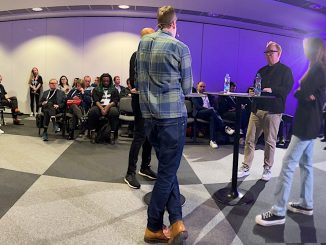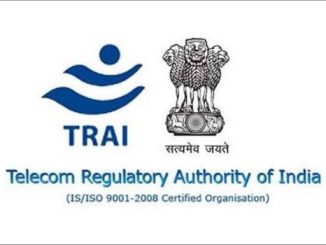
Forget the platform and talk about the world of audio: Grant Blackley at #RDE23
Since SCA CEO Grant Blackley articulated the evolution of Southern Cross Austereo a few years ago at RadioDays Europe, the company has been invited back regularly for Europeans to learn from the Australian company’s strategy for developing its business in a fast-changing media landscape.This year Blackley told the next chapter of the story.“A few years ago we set out to disrupt and transform the digital audio industry. We realised that listeners wanted a single destination for their audio, so we launched LiSTNR.“We are now in the scaling phase of our business,” said Blackley as he outlined the stages of business development expected for SCA audio, which are: launch, scale then peak.Key elements of the success of LiSTNR’s business evolution include personalisation, discovery, commercialisation and visualisation.Personalisation“People have different habits and use different devices each day, so we start by gathering basic information, then keep track of what they choose and where they left off in their audio feeds. We store it in a secure and private profile,” explained Blackley.The company uses Google Firebase and Salesforce to enable “a familiar and continuous experience on apps, website and email newsletters.”Discovery“Content discovery is one of the more difficult things to do well.“We aim to recommend like a friend would give word of mouth suggestions. It has to be a good recommendation delivered at the right time when they are thinking what to listen to next… We use AI to determine the content they may want next and when they want it.”Source AI and Sonnant are used to transcribe all audio for detailed analysis of the content in a show that can then be related back to the listener for recommendations. This is the next stage of a combination of new tools that convert speech to text, analyse the words used in the content, then cross reference them with words in the podcast or catch-up radio segment the person was just listening to, so the recommendation is something directly relevant to content, not just a topic described in the tag or synopsis of the podcast.Commercialisation“Our ad offering is at the core of our strategy, we aim to create a compelling opportunity for brands to use us at scale.” The company has rationalised its platforms, making sure it now controls its “full digital audio inventory,” to be able to offer the best deal to advertisers in a brand safe environment.Tech partners for this aspect of the business strategy are NumberEight and Frequency. “These partners can tell us where the listeners are and what they are doing… at home, driving, jogging, etc… The data never leaves the person’s device so it is private, we don’t store it… with this information we can delivery dynamic ads that are relevant to each person listening.,” said Blackley.The most success SCA has had with this type of advertising is with sports content. “We use dynamic ad insertion at the end of a break which tells the score of a real time game and link it to the sport sponsor or a relevant advertiser.”VisualisationSCA is embracing visualisation more in LiSTNR because “the boundaries between audio and video are continuing to merge, expecially in podcasts. We have visualised our radio content for over 10 years… we are now fully connected visually in all our offices.”Blackley sees visualisations as a “pathway forward for content and advertisers.”There has been a 700% growth of the LiSTNR app in the last 6 months, as a result of a planned digital strategy which began with switching off SCA station feeds from TuneIn in October 2021, closing old apps and migrating people from those early digital listening platforms to the new LiSTNR app. To entice listeners to the new app, SCA expanded its content offerings to include more live sport and international content offerings from Wondery and Stitcher to entice listeners to the new platform.“We are underpinning the future of broadcast radio by delivering more options. People were worried that this might canibalise their radio broadcast audience, but our projections show that it won’t do that, it will grow audience.”SCA has decided to stay within 6 verticals the company thinks are core to its audio expansion strategy:• Radio & Music• Entertainment & Culture• Sport• Factual & Drama• Parenting & Kids Entertainment• News & Info“If something doesn’t fit we won’t take it on.”SCA now controls the RSS feed and insertion of every ad and retains 100% of the funds from those ads, when previously other platforms were inserting ads and taking part of the revenue that should have all been available to the broadcaster. “New income in this area has been driven to this segment of our business…. we now have about 700 sales people and have grown our audio content output by 66%,” said Blackley.“Advertisers and audiences realise that there is a wider distribution available to them now… Younger people don’t listen on radios but they do listen to radio, we have to be on any device of their choice.”“The longer they stay in our ecosystem the more they discover what else we offer and spend more time with all our content. LiSTNR represents their AUDIO world, not just their radio or podcast world… Forget the platform and talk about the world of audio,” urged Blackley. […]





